Ireland
Welcome to Ireland
Step onto the Emerald Isle and you’ll quickly understand why Ireland captures the hearts of travelers year after year. With its rolling green hills, dramatic coastlines, and a culture steeped in myth and music, Ireland is a destination that feels both timeless and refreshingly alive. Whether you’re drawn by the vibrant cities, the warmth of its people, or the wild beauty of its landscapes, Ireland in 2025 promises unforgettable adventures and authentic experiences for every kind of traveler.
Ireland is an island nation on the western edge of Europe, divided into the Republic of Ireland and Northern Ireland (part of the United Kingdom). The country is renowned for its lush scenery, ancient castles, and a rich tapestry of folklore and tradition. Its cities-like Dublin, Cork, Galway, and Belfast-buzz with energy, art, and history, while the countryside offers tranquil escapes, from windswept beaches to misty mountains.
The official languages are Irish (Gaeilge) and English, and the currency in the Republic is the Euro. Ireland’s population hovers around five million, and its compact size makes it easy to explore multiple regions within a single trip. The Irish climate is famously unpredictable: expect warm summers, mild winters, and the possibility of “four seasons in one day.” Pack layers and a sense of adventure, and you’ll be ready for anything.
Why Visit Ireland?
1.
For hikers and nature lovers, Ireland’s walking trails are a revelation. Explore the Beara Way in West Cork or the Ulster Way in Northern Ireland for contemplative journeys through remote landscapes. Venture to Skellig Michael, a UNESCO World Heritage Site, where ancient monastic ruins perch above crashing waves. Or lose yourself among the serene lakes and woodlands of Killarney National Park. Even in winter, Ireland enchants with snow-dusted mountains, windswept beaches, and cozy pubs warmed by peat fires.
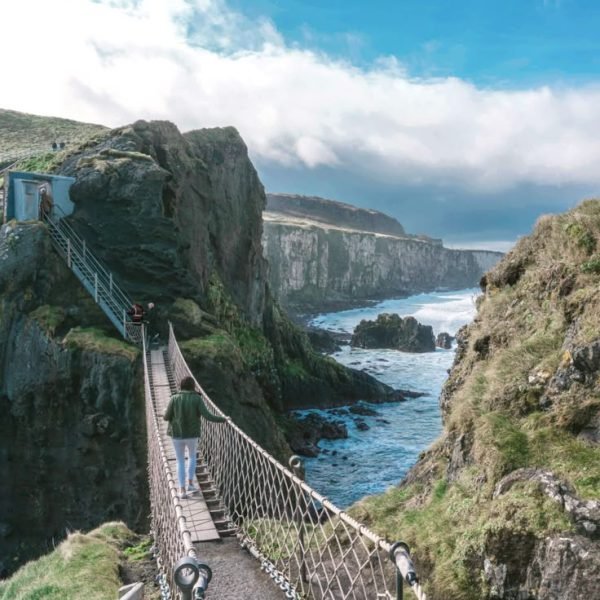
2.
Ireland’s history is woven into every stone wall and lively pub. The island is dotted with ancient castles, monastic sites like Glendalough, and prehistoric wonders such as Newgrange-older than the pyramids of Egypt. In cities like Dublin, you can view the illuminated Book of Kells at Trinity College, wander through world-class museums, or trace literary legends from James Joyce to W.B. Yeats.
Music and storytelling are at the heart of Irish life. Traditional sessions spill out of pubs in Galway and Dingle, where fiddles, flutes, and bodhráns invite you to join the craic (fun).
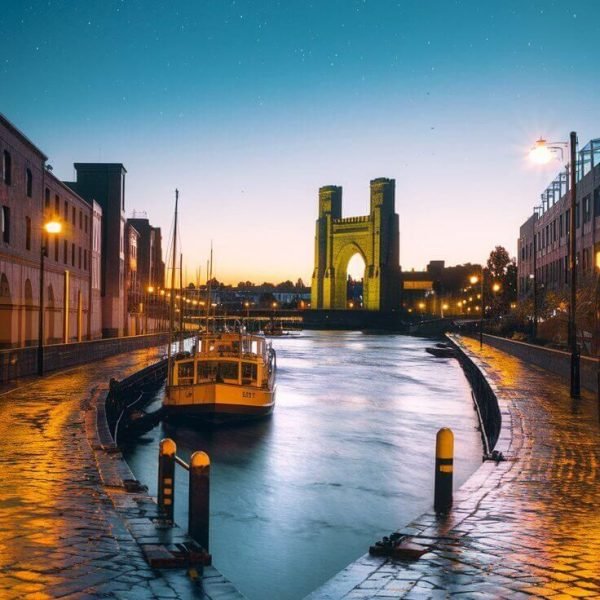
Planning Your Trip
Visa Information
Who Needs a Visa?
Ireland’s visa policy is straightforward but does depend on your nationality and the purpose of your visit. Citizens of the European Union (EU), European Economic Area (EEA), and Switzerland do not require a visa to enter Ireland. Many other countries also enjoy visa-free access for short visits, including the United States, Canada, Australia, New Zealand, Japan, and most South American nations. However, travelers from certain countries-including, as of March 2025, Eswatini, Lesotho, Nauru, Dominica, Honduras, Vanuatu, and Bolivia-must obtain a visa before traveling to Ireland. Transit visas may also be required for travelers passing through Ireland en route to another destination.
If you are unsure about your visa requirements, consult the most current information provided by the Irish government or your local Irish embassy or consulate. Visa rules are subject to change, so always double-check before booking your trip.
Types of Visas
- Short Stay ‘C’ Visa: This is the most common visa for tourists, allowing stays of up to 90 days. It covers tourism, family visits, short business meetings, or short courses. You cannot extend a ‘C’ visa or convert it to another type while in Ireland.
- Long Stay ‘D’ Visa: For those planning to stay longer than three months (for study, work, or joining family), a ‘D’ visa is required. Holders of this visa must register with the Irish authorities and obtain an Irish Residence Permit if staying beyond 90 days.
- Multiple Entry Visas: These are available for travelers who need to visit Ireland frequently, such as for business. Generally, your first visa will be single-entry, but you may apply for a multiple entry visa if you have previously complied with Irish visa conditions.
Application Process
To apply for a visa, you’ll need to:
- Complete the online application form (AVATS system).
- Prepare supporting documents, including a valid passport (with at least six months validity beyond your departure date), recent passport-sized photos, proof of accommodation, travel itinerary, bank statements, and travel insurance.
- Provide evidence of your intent to return home (such as employment, school enrollment, or family ties).
- Pay the visa fee (currently €60 for a single-entry short-stay visa, €100 for a multiple-entry visa).
- Submit your application to the relevant Irish embassy or visa office.
Processing times are typically around eight weeks, but can vary depending on your location and the time of year. Apply as early as possible to avoid delays.
Special Notes for 2025
Recent changes require nationals of Eswatini, Lesotho, Nauru, Dominica, Honduras, and Vanuatu to obtain a visa before travel. Transitional arrangements may apply for those with pre-existing travel plans, particularly in cases of emergency, education, or employment. Check with Irish immigration if you fall into one of these categories.
Best Time to Visit
Ireland’s charm is ever-present, but your experience will vary depending on the season. Here’s a guide to help you choose the best time for your trip:
Spring (March–May):
Spring brings mild temperatures, blooming wildflowers, and fewer crowds. It’s an ideal time for exploring gardens, countryside walks, and enjoying the awakening landscapes. Events like St. Patrick’s Day in March add a festive touch.
Summer (June–August):
Summer is Ireland’s peak tourist season, with the warmest weather and the longest daylight hours. Expect lively festivals, bustling cities, and vibrant coastal towns. It’s perfect for outdoor adventures, scenic drives, and enjoying the famous Irish hospitality. Book accommodations and attractions in advance during this busy period.
Autumn (September–November):
Autumn offers crisp air, golden foliage, and a quieter atmosphere. It’s a wonderful time for food festivals, harvest celebrations, and scenic drives through the countryside. The weather remains relatively mild, and prices may be lower than in summer.
Winter (December–February):
Winter is the quietest season, ideal for those seeking a peaceful escape. While some attractions may have shorter hours, you’ll find cozy pubs, festive Christmas markets, and the dramatic beauty of Ireland’s winter landscapes. It’s also a great time for cultural experiences in cities like Dublin, Galway, and Cork.
When to Book:
For the best combination of pleasant weather and manageable crowds, consider visiting in late spring (May–June) or early autumn (September). These shoulder seasons offer a balance of good weather, open attractions, and more availability in accommodations.
Getting To and Around
Getting to Ireland
Ireland is well-connected to the rest of the world, making it easy to reach from virtually anywhere.
By Air:
Dublin Airport is the main international gateway, with direct flights from North America, Europe, the Middle East, and beyond. Cork, Shannon, and Belfast airports also serve international and regional flights, providing convenient access to different parts of the island.
Major airlines and low-cost carriers operate frequent services, making Ireland accessible for both long-haul and short-haul travelers. If you’re coming from the UK or mainland Europe, consider flying into regional airports for quicker access to the west or south of Ireland.
By Sea:
Ferry services connect Ireland with the UK and continental Europe. Ferries operate from Holyhead, Liverpool, and Pembroke to Dublin, Rosslare, and Belfast. This is a popular option if you wish to bring your own car or enjoy a more leisurely journey.
By Land:
If you’re already in Northern Ireland (part of the UK), you can travel freely across the border into the Republic of Ireland without border checks.
Getting Around Ireland
Ireland’s compact size means you can see a lot in a short time, but your mode of transport will shape your experience.
Public Transport:
- Trains: Irish Rail (Iarnród Éireann) connects major cities and towns, offering comfortable and scenic journeys. Key routes include Dublin to Cork, Galway, Limerick, and Belfast (via Northern Ireland Railways).
- Buses: Bus Éireann and private operators provide extensive coverage, reaching towns and rural areas not served by train. Express services link cities, while local buses connect villages and attractions.
- Light Rail & Urban Transport: Dublin has a modern light rail system (LUAS) and extensive bus network. Leap Cards offer discounted fares for public transport in Dublin and other cities.
Car Rental:
Renting a car gives you the freedom to explore Ireland’s hidden gems, scenic routes, and remote villages at your own pace. Roads are generally well-maintained, though some rural lanes can be narrow and winding. Remember, driving is on the left side of the road. Book in advance, especially in high season.
Cycling and Walking:
Ireland is increasingly popular with cyclists and walkers. Greenways, such as the Great Western Greenway in Mayo and Waterford Greenway, offer safe, scenic routes. Many towns and cities are pedestrian-friendly, and guided walking tours are a great way to discover local history.
Taxis and Rideshares:
Taxis are widely available in cities and towns. Rideshare apps operate in larger urban areas, though coverage may be limited in rural regions.
Domestic Flights:
While not necessary for most travelers due to Ireland’s size, domestic flights connect Dublin with regional airports like Kerry, Donegal, and Cork.
Ferries:
Regular ferries operate to the Aran Islands, the Skelligs, and other offshore destinations, adding adventure to your itinerary.
Final Tips
- Book accommodations and key attractions in advance during peak months.
- Consider a mix of public transport and car rental for flexibility.
- Pack for changeable weather-layers and waterproofs are essential.
- Allow time to slow down and enjoy Ireland’s legendary hospitality and natural beauty.
With thoughtful planning, your trip to Ireland in 2025 will be seamless, enriching, and full of unforgettable moments.
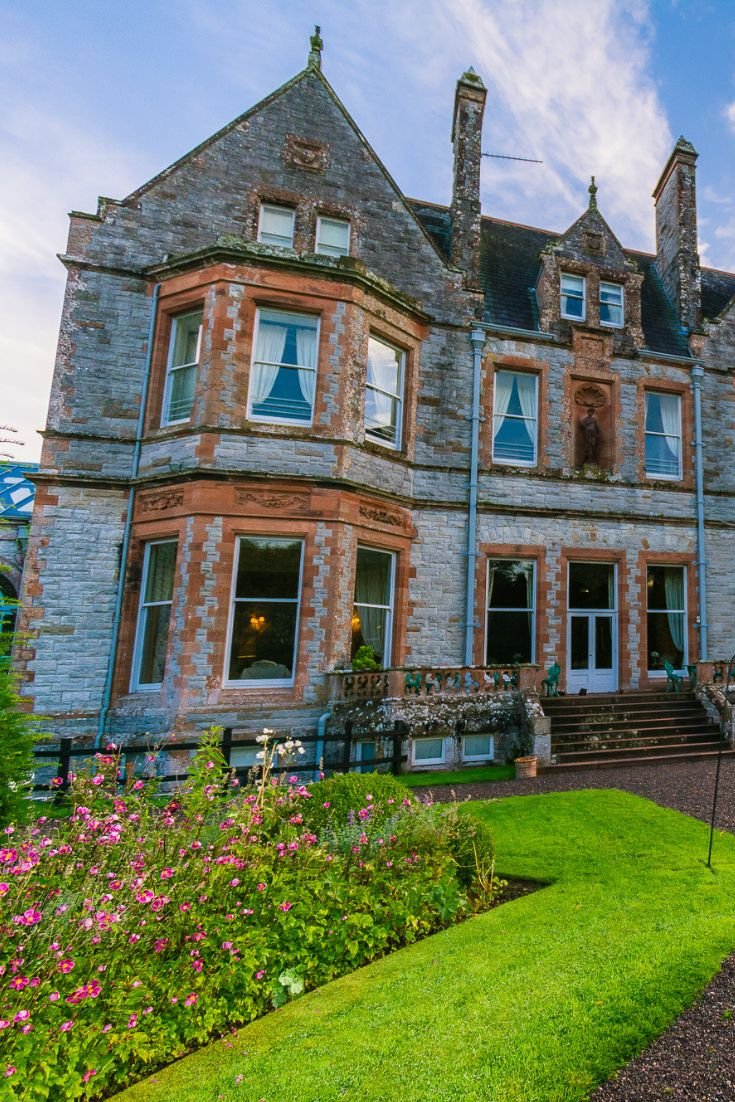
Accommodation
Ireland’s accommodation options cater to every traveler, blending modern comforts with traditional hospitality.
Hotels & Guesthouses
- Luxury Castles & Manor Houses: Stay in historic estates like Ashford Castle or Adare Manor, where opulent rooms and fine dining meet world-class golf courses and spa retreats.
- Boutique Hotels: Dublin’s Dylan Hotel and Cork’s River Lee Hotel offer chic design and prime city-center locations.
- Family-Run Guesthouses: For authentic Irish hospitality, try a B&B in Dingle or Kinsale, where hosts often share local tips over homemade soda bread.
Self-Catering & Rental Homes
- Coastal Cottages: Rent a thatched-roof cottage in Connemara or a cliffside retreat in Donegal for privacy and stunning views.
- City Apartments: Dublin, Galway, and Belfast have modern apartments ideal for families or groups.
- Glamping: Try eco-friendly pods or yurts in Kerry’s Killarney National Park for a blend of adventure and comfort.
Budget-Friendly Options
- Hostels: Generator Hostel (Dublin) and Kinlay House (Galway) provide affordable dorms and private rooms in central locations.
- Farm Stays: Experience rural life by staying on working farms in counties like Tipperary or Wicklow.
- University Housing: Some colleges, like Trinity Dublin, rent dorm rooms to tourists during summer (May–August).
Unique Stays
- Castle Hotels: Sleep in a tower room at Cabra Castle or Clontarf Castle.
- Lighthouses: Converted lighthouses like Loop Head in Clare offer rugged coastal charm.
- Pub Accommodations: Many traditional pubs, such as Dick Mack’s in Dingle, have rooms above the bar-perfect for live music enthusiasts.
Booking Tips: Reserve early for summer travel, especially in popular spots like the Wild Atlantic Way. Use local platforms like StudentPad or university portals for seasonal deals.

Food and Drink
Ireland’s food scene has evolved from hearty stews to Michelin-starred innovation, all rooted in world-class local produce.
Traditional Dishes to Try
- Irish Stew: Lamb, potatoes, and carrots slow-cooked to perfection. Best sampled in rural pubs like Johnnie Fox’s in the Dublin Mountains.
- Boxty: A potato pancake from the northwest, often served with smoked salmon.
- Coddle: Dublin’s iconic sausage-and-bacon stew, traditionally eaten on Fridays.
- Seafood Chowder: Creamy and packed with mussels, cod, and salmon. Try it in Galway’s O’Grady’s on the Pier.
- Soda Bread: Every region has its twist-look for versions with raisins or treacle.
Modern Irish Cuisine
- Michelin Stars: Dublin’s Chapter One and Cork’s Ichigo Ichie showcase inventive dishes using foraged ingredients.
- Farm-to-Table: Restaurants like The Wild Honey Inn (Clare) highlight organic, local produce.
- Vegan & Vegetarian: Dublin’s Cornucopia and Cork’s Café Paradiso offer creative plant-based menus.
Pubs & Nightlife
- Traditional Music Pubs: Galway’s Tig Cóilí and Dingle’s Dick Mack’s host nightly sessions with fiddles and bodhráns.
- Craft Beer: Sample local brews like Smithwick’s Red Ale or Kinnegar’s Black IPA.
- Whiskey Tastings: Visit the Jameson Distillery in Cork or Bushmills in Antrim for tours and tastings.
Markets & Artisans
- English Market (Cork): A foodie paradise since 1788, selling everything from tripe to artisanal cheeses.
- Temple Bar Food Market (Dublin): Saturdays bring fresh oysters, sourdough, and gourmet coffee.
- Food Festivals: Don’t miss Taste of Dublin (June) or Galway Oyster Festival (September).
Budget Eating
- Pub Specials: Many pubs offer €10–15 lunch deals, including a main and pint.
- Supermarkets: Dunnes Stores and SuperValu have ready-made meals and local snacks.
- Cafés: Try a “breakfast roll” (sausage, bacon, and egg in a baguette) from corner shops.
Dietary Needs
Gluten-free, vegan, and halal options are widely available in cities. Smaller towns may have fewer choices, so plan ahead.
Local Insights
- Tipping: Not mandatory-round up the bill or tip 10% for exceptional service.
- Pint Etiquette: Never let a local buy you a drink without reciprocating-it’s a cultural faux pas.
- Hidden Gems: Seek out “chipper vans” (fish-and-chip trucks) for late-night bites after pub closings.
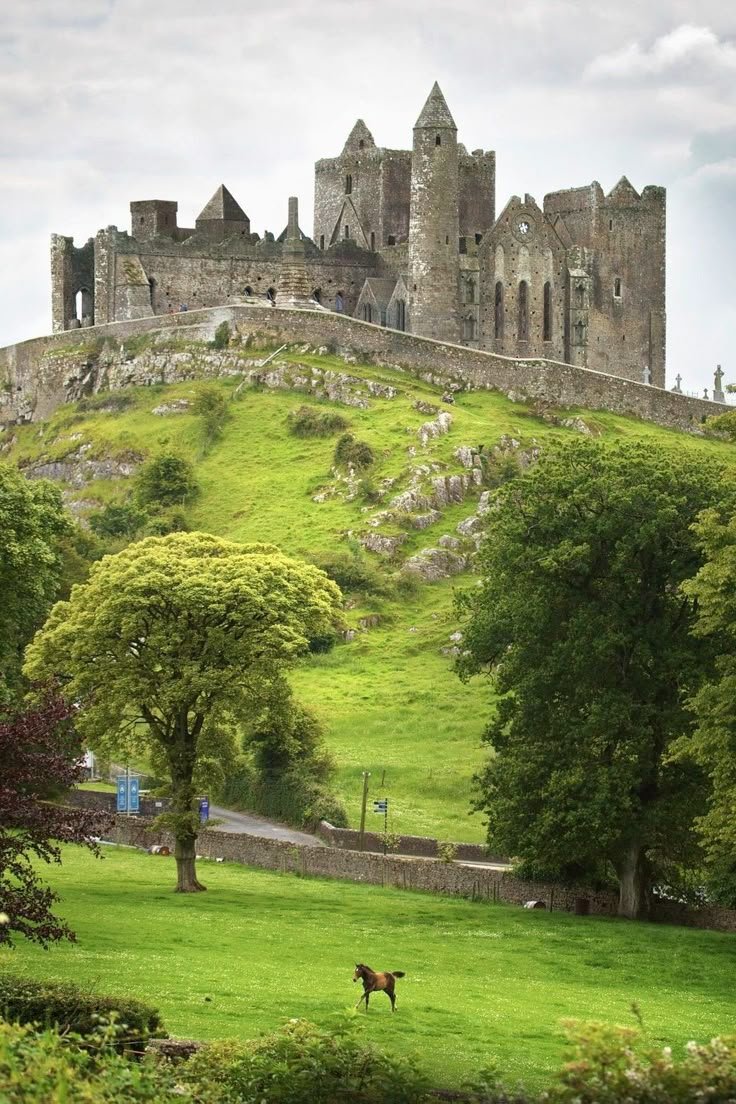
Must-See Attractions
- Cliffs of Moher
Rising 214 meters above the Atlantic, these iconic cliffs in County Clare stretch for 14 kilometers, offering jaw-dropping vistas. Visit at sunset for golden hues reflecting off the waves, or brave the windswept trails for puffin-spotting (April–July). The eco-friendly visitor center delves into the cliffs’ geology and wildlife.
- Giant’s Causeway
Northern Ireland’s UNESCO-listed basalt columns, formed by volcanic activity 60 million years ago, are steeped in myth. Walk the hexagonal stones, explore the coastal trails, and visit the nearby Carrick-a-Rede Rope Bridge for adrenaline-pumping views.
- Ring of Kerry
This 179-kilometer loop in County Kerry winds through Killarney National Park, past Torc Waterfall, and along the rugged Iveragh Peninsula. Stop at the Skellig Islands viewpoint-a filming location for Star Wars-or detour to the serene Derrynane Beach.
- Dublin’s Cultural Gems
- Trinity College & the Book of Kells: Marvel at the 9th-century illuminated manuscript in the Long Room Library, a cathedral of knowledge with oak shelves housing 200,000 ancient texts.
- Guinness Storehouse: Learn to pour the perfect pint at Dublin’s top attraction, then toast with 360-degree city views from the Gravity Bar.
- Kilmainham Gaol: This former prison played a pivotal role in Ireland’s fight for independence. Guided tours recount tales of rebels and revolutionaries.
- Connemara & Kylemore Abbey
Galway’s wild west is a mosaic of bogs, lakes, and mountains. Kylemore Abbey, a neo-Gothic masterpiece, sits beside a tranquil lake, its Victorian walled garden blooming with heirloom plants.
- Newgrange & Ancient East
Older than Stonehenge, this 5,200-year-old passage tomb in County Meath aligns with the winter solstice sunrise. Nearby, the Hill of Tara was once the seat of Ireland’s High Kings.
- Blarney Castle
Kiss the Blarney Stone to “gain the gift of gab,” then wander through poison gardens and mystical rock formations in County Cork.
- The Dingle Peninsula
Drive the Slea Head Loop for coastal panoramas, visit the Blasket Islands’ abandoned village, and meet Fungie the dolphin (or his successors) in Dingle Harbour.
- Glendalough
Nestled in the Wicklow Mountains, this 6th-century monastic site features a round tower, glacial lakes, and forest trails perfect for autumn hikes.
- Belfast’s Titanic Quarter
Explore the shipyard where the RMS Titanic was built, then visit the interactive museum to uncover the liner’s tragic maiden voyage.
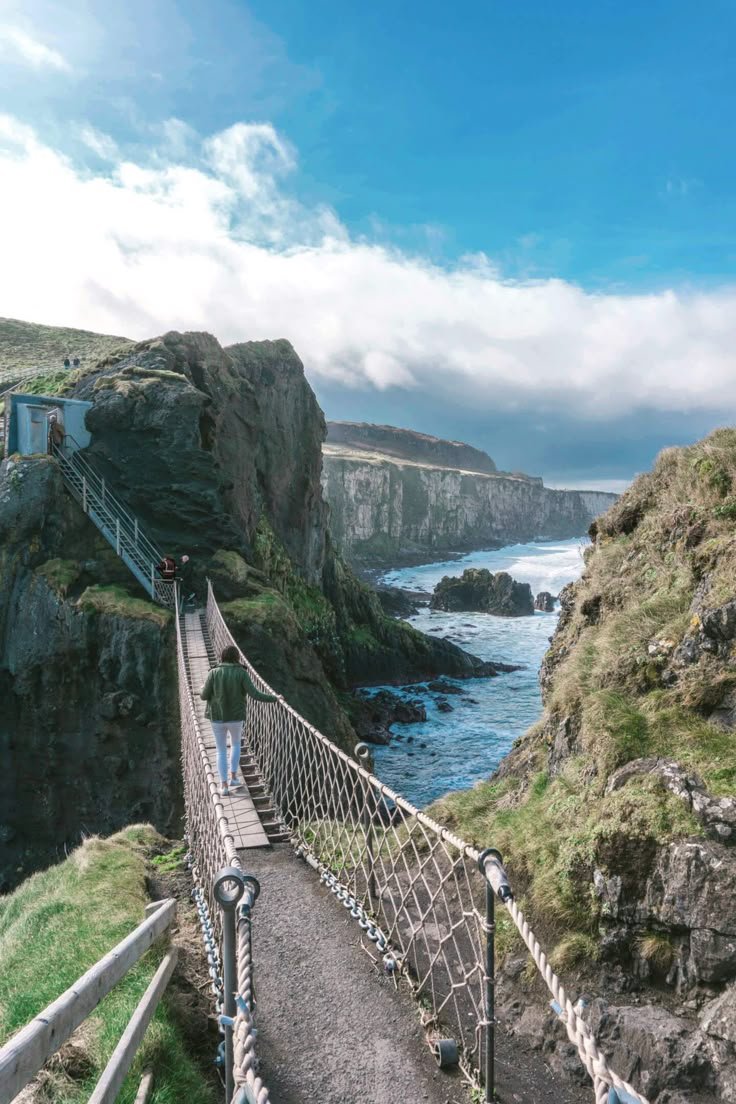
Must-Do Activities
- Drive the Wild Atlantic Way
Spanning 2,500 kilometers from Donegal to Cork, this coastal route delivers drama at every turn. Highlights include:
- Slieve League Cliffs: Europe’s highest sea cliffs (601 meters), far less crowded than the Cliffs of Moher.
- Achill Island: Cycle the Great Western Greenway or swim in Keem Bay’s turquoise waters.
- Doolough Valley: This desolate Mayo-Galway pass, framed by mountains, feels hauntingly beautiful.
- Hike Ireland’s Trails
- Carrauntoohil: Conquer Ireland’s highest peak (1,038 meters) in Kerry’s MacGillycuddy’s Reeks.
- Croagh Patrick: Pilgrims climb this “holy mountain” in Mayo barefoot; visitors can opt for boots.
- Coumshingaun Lough: A challenging 4-hour hike in Waterford rewards with glacial lake views.
- Experience Traditional Music
Join a “trad session” in Galway’s Tig Cóilí or Dingle’s O’Sullivan’s Courthouse Pub. Tip: Musicians often play from 9:30 PM-arrive early for seats.
- Savor a Foodie Tour
- Cork’s English Market: Sample artisanal cheeses and fresh seafood at this 18th-century gem.
- Galway Oyster Festival: Shuck bivalves with a pint of Guinness at this September highlight.
- Farm Visits: Try seaweed foraging in Kerry or whiskey blending at Jameson Distillery Midleton.
- Explore Hidden Caves & Islands
- Mitchelstown Caves: Tipperary’s underground wonderland features the 9-meter “Tower of Babel” stalagmite.
- Aran Islands: Cycle Inis Mór to Dún Aonghasa, a 3,000-year-old cliff fort.
- Take a Literary Pilgrimage
- Yeats Country: Visit Sligo’s Benbulben mountain and Drumcliff Abbey, the poet’s resting place.
- Dublin Writers Museum: Celebrate Joyce, Beckett, and Wilde in the city that inspired them.
- Try Adventure Sports
- Surfing: Ride Atlantic swells at Bundoran (Donegal) or Lahinch (Clare).
- Kayaking: Paddle beneath the Cliffs of Moher or through Killarney’s lakes.
- Horseback Riding: Trot along beaches in Connemara or through Wicklow’s valleys.
- Visit Festivals
- St. Patrick’s Day (March): Dublin’s parade dazzles, but smaller towns like Kilkenny offer cozier celebrations.
- Galway International Arts Festival (July): Street performances, theater, and cutting-edge installations.
- Derry Halloween (October): Europe’s biggest Halloween party features haunted trails and fire shows.
- Cruise the River Shannon
Rent a self-drive boat from Carrick-on-Shannon to explore Lough Derg’s islands and waterside pubs.
- Go Stargazing
- Kerry International Dark-Sky Reserve: Europe’s only Gold Tier sanctuary for unobstructed Milky Way views.
- Donegal’s Malin Head: Ireland’s northernmost point offers aurora sightings on clear winter nights.
Insider Tips
- Avoid Crowds: Visit top attractions early morning or late afternoon.
- Local Guides: Book walking tours in Dublin (for history) or Cork (for food) to uncover hidden gems.
- Weather Prep: Pack waterproof layers-even in summer.
Transport Hacks: Use regional buses for budget travel between towns.

Travel Tips
Ireland is a country that welcomes visitors with open arms, renowned for its friendly locals, vibrant culture, and breathtaking scenery. To make the most of your Irish adventure in 2025, it’s important to be prepared-not only with your itinerary, but also with practical safety tips, an understanding of local customs, and a grasp of language basics. Here’s a comprehensive guide to help you travel smart, respectfully, and confidently across the Emerald Isle.
Safety Advice
- General Safety
Iceland is consistently ranked among the safest countries in the world, boasting extremely low crime rates and a strong sense of community. Violent crime is rare, and even petty theft is uncommon. You’ll likely feel secure exploring cities and rural areas alike, whether you’re traveling solo, with friends, or as a family. - Nature and Outdoor Safety
While Iceland’s natural beauty is breathtaking, its wild landscapes demand respect and caution:
- Unpredictable Weather: Icelandic weather can change in minutes. Always dress in layers, including waterproof and windproof outerwear. Check weather forecasts and travel alerts before heading out, especially if venturing into remote areas.
- Road Safety: Driving in Iceland can be challenging, with gravel roads, strong winds, and sudden weather changes. Rent a suitable vehicle (preferably a 4×4 for rural or Highland travel), obey speed limits, and never stop on the road for photos. Always check road conditions before setting out.
- Stay on Marked Paths: The country’s fragile environment and hidden hazards-such as geothermal vents, crevasses, and unstable cliffs-make it crucial to stick to marked trails and heed warning signs. Off-road driving is strictly illegal and can result in hefty fines.
- Water Hazards: Beaches like Reynisfjara are notorious for powerful “sneaker waves” that can sweep people out to sea. Never turn your back on the ocean and keep a safe distance from the surf.
- Glaciers and Hot Springs: Never venture onto glaciers or into ice caves without a certified guide. When visiting hot springs or geothermal pools, always test water temperature before entering and avoid areas with warning signs.
- Emergency Preparedness: Share your travel plans with someone and check in regularly. Download safety apps like 112 Iceland, which allows you to send your location to emergency services if needed.
- Health and Medical Care
Iceland offers excellent healthcare, with modern facilities and universal coverage. Pharmacies are well-stocked, and emergency services are efficient. Tap water is among the purest in the world-drink freely from any tap. - Environmental Hazards
- Volcanic Activity: Iceland’s volcanoes are closely monitored. Pay attention to local news and government advisories, especially if visiting areas with recent eruptions or heightened activity.
- Strong Winds and Sandstorms: Particularly on the South Coast, winds can be fierce and sandstorms may damage vehicles or reduce visibility. Park your car facing the wind and avoid driving in severe conditions.
Local Customs
The Irish Welcome
Irish people are famously warm, chatty, and eager to help. Expect friendly banter and a genuine curiosity about your background. A simple “hello” or “how are you?” goes a long way. Don’t be surprised if locals strike up a conversation in a pub or on public transport-it’s part of the charm.
Pub Etiquette
Pubs are at the heart of Irish social life. When ordering at the bar, wait your turn patiently-there’s no formal queue, but bartenders keep track of who’s next. Tipping is not obligatory, but rounding up your bill or leaving small change is appreciated. If someone buys you a drink, it’s customary to return the favor with a “round.”
Respecting Traditions
Irish people are proud of their history and culture. When visiting historical sites, churches, or rural communities, dress modestly and behave respectfully. In rural areas, always close gates behind you and avoid trespassing on private land. If you’re invited into someone’s home, a small gift like chocolates or wine is a thoughtful gesture.
Conversation and Humor
The Irish sense of humor is dry and self-deprecating, often laced with irony. Don’t be offended by gentle teasing-it’s a sign of affection. Avoid heated discussions about politics or religion, especially regarding Northern Ireland, unless you know your company well.
Tipping
Tipping is customary but not mandatory. In restaurants, 10–15% is standard for good service. In pubs, it’s common to leave small change or round up the bill. Taxi drivers and hotel porters also appreciate a modest tip.
Queuing and Politeness
Irish people are generally polite and patient. Queueing is respected, and pushing ahead is frowned upon. Always say “please,” “thank you,” and “sorry” when appropriate.
Language Basics
English and Irish (Gaeilge)
English is the main language spoken throughout Ireland, making communication easy for most travelers. However, Irish (Gaeilge) is also an official language and is used on road signs, in schools, and in certain regions known as the Gaeltacht (mainly in the west). You’ll hear Irish spoken in some rural communities and during cultural events.
Common Irish Phrases
While you’ll get by with English, sprinkling your conversation with a few Irish words is sure to delight locals:
- Hello: “Dia dhuit” (DEE-ah gwit)
- Goodbye: “Slán” (slawn)
- Thank you: “Go raibh maith agat” (guh rev mah a-gut)
- Cheers: “Sláinte” (SLAWN-cha)
- Yes/No: “Tá” (taw) / “Níl” (neel)
- How are you?: “Conas atá tú?” (KUN-us uh-TAW too?)
Everyday Expressions
- “Craic” (crack): Fun, entertainment, good times. (“What’s the craic?” means “What’s happening?”)
- “Grand”: Everything is fine or good.
- “Eejit”: Affectionate term for someone being silly.
- “Lad/Lass”: Boy/girl or man/woman.
Gaeltacht Regions
If you venture into Gaeltacht areas (such as parts of Galway, Donegal, or Kerry), you’ll see more Irish language on signs and may hear it spoken in shops and pubs. Don’t worry-locals are happy to switch to English, but a friendly “Go raibh maith agat” will always be appreciated.
Final Tips for a Smooth Journey
- Weather: Ireland’s weather is famously changeable. Pack layers and a waterproof jacket, even in summer.
- Identification: Always carry a copy of your passport and emergency contacts.
- Adaptors: Ireland uses the British-style three-pin plug (Type G). Bring a suitable adaptor for your electronics.
- Health: Tap water is safe to drink. Pharmacies are well-stocked, and emergency medical care is of a high standard.
- Respect the Land: Take your litter with you, stick to marked trails, and help preserve Ireland’s natural beauty for future visitors.
Traveling Ireland in 2025 is as much about embracing local life as it is about sightseeing. With these travel tips, you’ll not only stay safe and comfortable, but also gain a deeper appreciation for the warmth, wit, and rich traditions that make Ireland truly unique. Safe travels-go n-éirí an bóthar leat! (May the road rise to meet you!)

